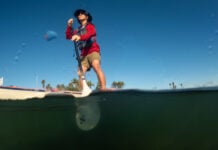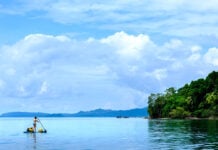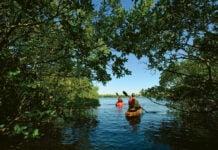Few places in the United States are as iconic as the Grand Canyon. Every year, millions of visitors make their way here, some to simply take in the legendary expanse, some to venture into the canyon on foot, some to explore from the back of a mule, and some—some to paddle.
Rafting, kayaking or canoeing the Grand Canyon is a trip of a lifetime for many due to the incredible array of wildlife, fascinatingly beautiful geology, and exciting rapids the area has on offer. Not to mention the exclusivity of a trip like this. This is an incredibly popular place, so be ready to book more than a year in advance—if you secure a spot on a trip at all.
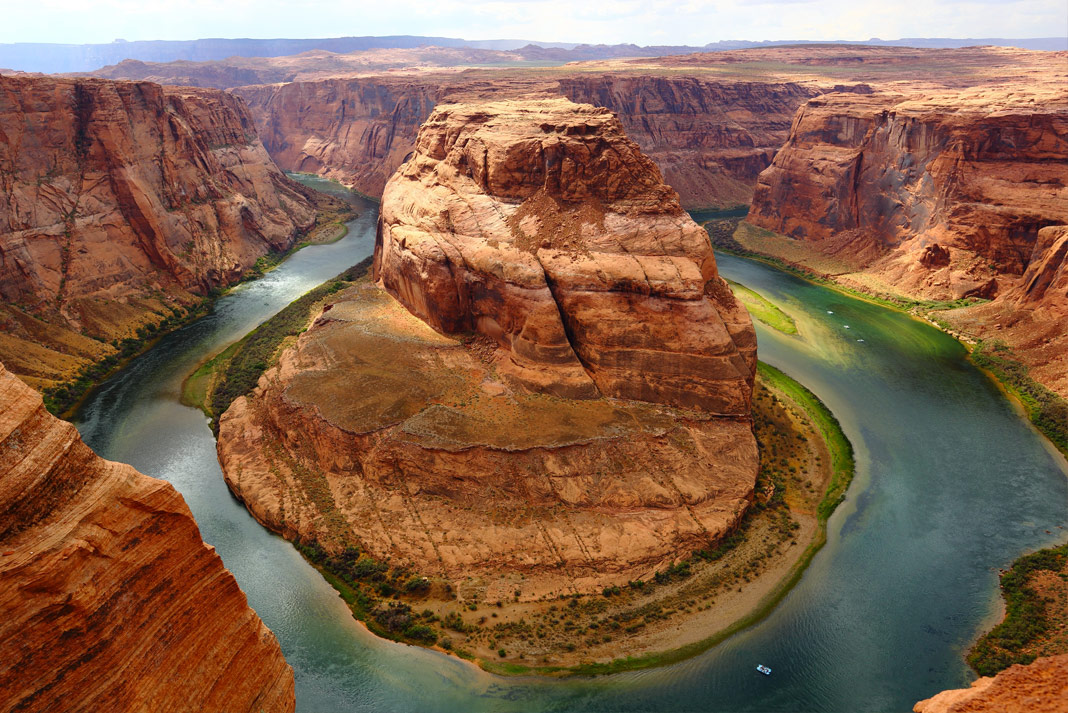
Of the 1,450 miles of the Colorado River, 277 miles flow through the Grand Canyon. There are many different trip options available to paddlers, but all of these will fall under the categories of commercial and non-commercial. Commercial trips are those that are run by designated tour guide companies. There are only a certain number of companies that are authorized to operate river tours through the Grand Canyon. This is mainly to ensure the area doesn’t become overrun with commercial activity in a way that threatens the preservation of the natural landscape and ecology.
Noncommercial trips refer to those that are not run through a guiding company, and are organized by private individuals who have entered the permit lottery and have won a group permit. If you’re looking at this option, be prepared for a potentially long wait, or a happy surprise! There are people who have been entering the permit lottery to raft the Grand Canyon for years and have yet to win, and some lucky ducks who have only entered once before getting their permit for the adventure of a lifetime. Be ready for your trip, but also be ready to be patient!
This guide will take you through everything you need to know for your Grand Canyon rafting trip.
General questions
How many people raft the Grand Canyon?
According to Grand Canyon National Park Trips, “more than 20,000 people float through the canyon every year.”
In 2019, there were 463 permits made available for noncommercial trips running in 2020. There are 462 permits for 2021.
Grand Canyon National Park tracks traffic on the Colorado River by user days, not number of people. In 2019, the section from Lees Ferry to Diamond Creek saw 114,337 commercial days and 107,679 noncommercial. The section from Diamond Creek to Pearce Ferry saw 15,178 noncommercial days.
The annual weighted lotteries for Grand Canyon rafting permits allow approximately 20,000 people to experience this awe-inspiring trip each year.
How long does it take to raft the entire Grand Canyon?
Most commercial tours of the full Grand Canyon last around 13 days; however, some may be longer depending on what other activities are included in the trip. Noncommercial river trips are given permits for 12 to 25 days.
The Grand Canyon River Outfitters Association has the full list of guide companies.
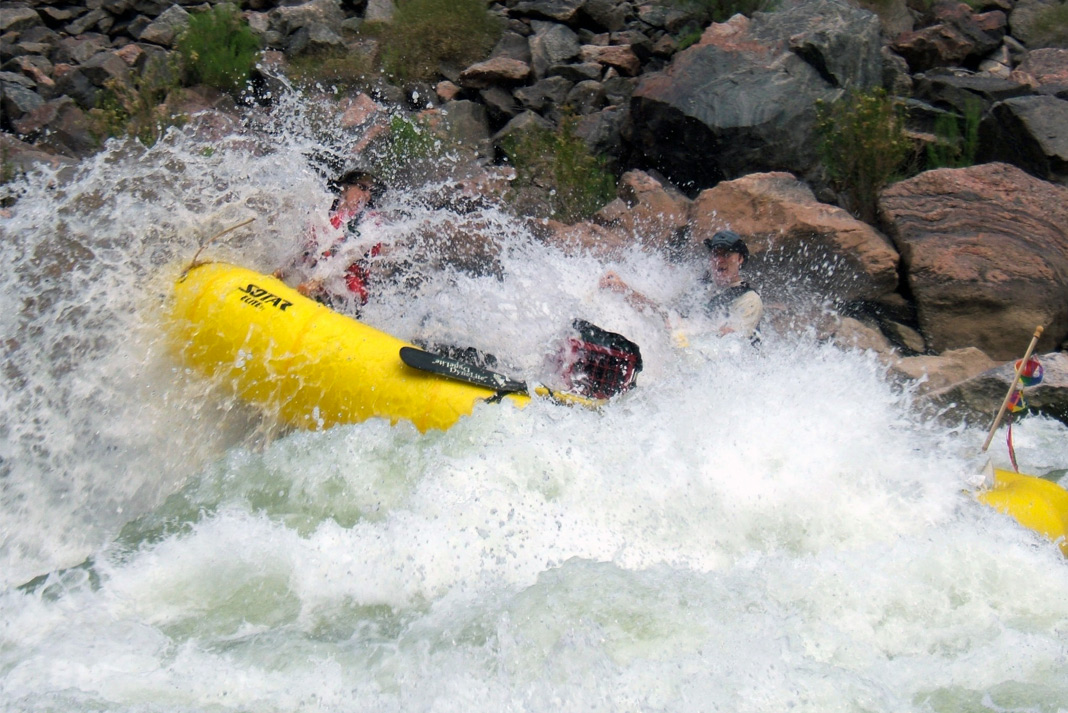
How dangerous is rafting the Grand Canyon?
The Colorado River through the Grand Canyon is technical water. Guides that are authorized to run river trips here have many years of experience, both on this stretch of river and others. Commercial trips ensure that an experienced guide is with your group at all times to educate and monitor on- and off-water safety practices. They also carry communication devices with them should the need for emergency attention occur.
If you’re embarking on a noncommercial rafting trip on the Grand Canyon, the best thing you can do to ensure your safety is learn river safety rules for both on- and off-water. About 40% of the accidents that occur while running the Grand Canyon are off-water, so make sure you’re informed on these rules as well! The best way to ensure your rafting trip on the Colorado is successful is to gain experience beforehand. There are many places across North America where you can get your feet wet and learn the basics before you make this trip of a lifetime. Generally, the minimum wait for a Grand Canyon run will be a year—plenty of time for you to hit the whitewater in other beautiful spots!
Best time to raft the Grand Canyon
The commercial rafting season in the Grand Canyon opens in April and closes in October, but noncommercial trips run year-round.
The “best time to go” really depends on what you’re looking for. If you’re after the best whitewater, you’re better to go in the summer months. The flow rate of the Colorado River here is different from other areas in that it doesn’t rely on snowmelt and runoff for big water in the spring months. This section of river is dam-controlled, and the highest need for water in the Southwest is during the summer months for air-conditioning and irrigation for agriculture. This means that the biggest whitewater through the Grand Canyon is during the hottest summer months.
However, if you want the best chance of securing a permit for a noncommercial trip, the best time to go is in the winter as these are the less-coveted trips.
Commercial river trips
If you’re not an experienced paddler, or at minimum a confident beginner with a few trips under your belt, a commercial rafting trip in the Grand Canyon will be your safest and most enjoyable option. A guided trip will let you fully take in your adventure of a lifetime, soak up the sights of towering canyon walls and appreciate the powerful Colorado River without anxiety about your river skills.
Best Grand Canyon rafting trips
Half-day
If you’re here for a quick stop, but want to see as much as you can, a half-day trip on a motorized raft will be just the thing.
Tours with Wilderness River Adventures will take you to Glen Canyon Dam, Petroglyph Beach, Horseshoe Bend, Lees Ferry and Vermillion Cliffs for $78.39 to $88.85 per person.
Advantage Grand Canyon also has a half-day option at $78.39 to $88.95 per person.
One-day
Unfortunately, there aren’t any one-day oar rafting trips through the Grand Canyon. There is an option for a one-day, self-guided kayak trip from Advantage Grand Canyon. The cost is $75 per person.
Rivers & Oceans offers a one-day, motorized rafting trip through class II to III rapids over 35 miles of river. Trips launch from Diamond Creek and cost $399 per person.
Three-day
For a three-day oar rafting trip in the Grand Canyon, the guiding company Advantage Grand Canyon has a great tour on offer. Their three- to five- day options go from Whitmore Landing or Mile 188 to Lake Mead and range from $1,247 to $2,315.
Four-day
Paddling trips on this section of the Colorado River generally fall in the one- to three-day or 6+ day range. If you’re interested in a motorized raft that guests don’t paddle, there are some four-day options available from guiding companies like Canyoneers.
Seven-day
Canyoneers guiding company offers week-long tours in the Upper Grand Canyon for $2,325 per person. These tours require a fairly high fitness level as you’ll be paddling throughout the days, and hiking out of the canyon for a full day.
Two-week
The longest trip that tour companies offer is two weeks. Raft Arizona offers 13-day rafting trips in the Grand Canyon for those 12 years old and over for $4,145. The full canyon tours are spectacular, with views each day that are unforgettable. If you can take the time, you won’t regret spending your hard-earned vacation time in this stunning place for two weeks!
Luxury Grand Canyon rafting trips
Luxury or all-inclusive rafting trips are a great option for seeing the Grand Canyon from the river in style. No roughing it here—your guides are boatmen that will do everything from loading and steering your raft, to cooking you first-class hot meals. Grand Canyon Expeditions offers a 14-day trip with transportation to and from Las Vegas included, luxury meals and sleeping accommodations, and comfortable rafts starting at $4,179. Bump up your experience even more by adding a helicopter trip to deliver you to the start of your trip!
Family whitewater rafting in the Grand Canyon
Planning a family rafting trip through the Grand Canyon is about customization and knowing your group. The elderly, those with injuries and special needs, and children under 8 are generally better off on trips under five days. Children over 12 could thrive and have the experience of a lifetime on some of the longer trips. You know your family best, so plan ahead and try to find a baseline for fitness, attitude and overall enthusiasm for a trip like this before committing to a timeline.
Grand Canyon rafting companies
- Arizona Raft Adventures
- Arizona River Runners
- Canyon Explorations/Expeditions
- Canyoneers
- Colorado River & Trail Expeditions
- Grand Canyon Expeditions Company
- Grand Canyon Whitewater
- Hatch River Expeditions
- O.A.R.S. Grand Canyon
- Outdoors Unlimited
- Tour West
- Western River Expeditions
- Wilderness River Adventures
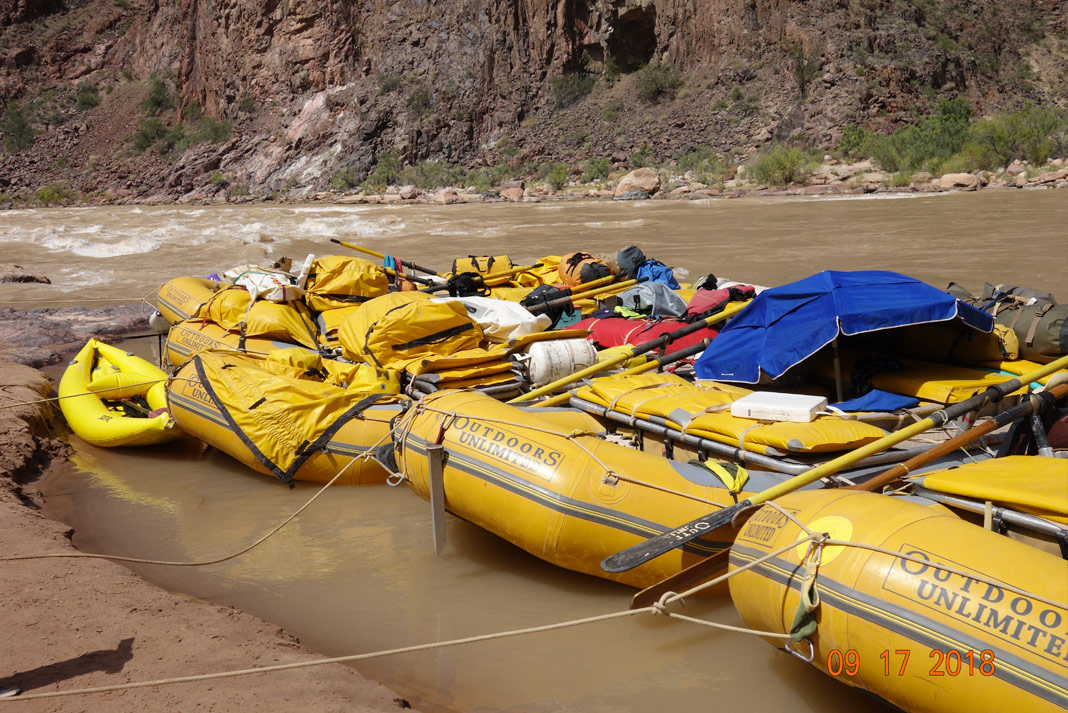
How much does a Grand Canyon rafting trip cost?
Trip costs vary vastly when you’re considering rafting in the Grand Canyon, from approximately $100 USD per person to over $4,000 USD per person. Your trip costs will vary mostly by length of time, with more luxury trip options to add on.
Is Upper or Lower Grand Canyon rafting better?
Popular opinion from those that are fortunate enough to have done both the Upper and Lower sections of the Colorado River through the Grand Canyon is that both sections are spectacular, and you can’t make a bad choice. Angel Bright Trail is a halfway landmark, and most guides split the river into sections at this spot. The Upper starts at Lee’s Ferry and ends at river mile 89, and the lower section starts at mile 89 and ends at mile 225.
How do you prepare for a rafting trip to the Grand Canyon?
Packing for a commercial trip might be simpler than you think. Essentially, pack for an active vacation in the sun. You can leave snazzy dinner clothes at home; think camping clothes, toiletries, cameras and GoPros. Most overnight trips will provide sleeping bags, tents and similar larger gear. Basically, if it would be tricky for you to take on a flight with you, it’s likely provided. Arizona River Runners has a more comprehensive list on their website, as do most tour companies.
Grand Canyon noncommercial river trips
How do I get a permit to raft the Grand Canyon?
The process to obtain a permit to raft the Grand Canyon can seem a little daunting. The volume of applications is so great each year that there is little incentive for NPS to make it too easy—if you want it, you’ll have to work for it! A little bit, anyways; it’s not too complicated once you get the lay of the land, so to speak.
First, you’ll need to create an account for lottery submissions through the National Park Service—you can do that here. Then you’ll wait for the release dates for the following year’s dates and trip sizes. This isn’t publicized beforehand, so you have to wait for the list to go live to find out what the available options are. You pay $25 USD once each lottery year, and that $25 allows you to apply for any lottery you want throughout that year. Then you’ll apply individually for each lottery as they open, and cross your fingers that you’re picked!
How does the Grand Canyon lottery work?
The lottery is called a weighted lottery. This means that when you create an account, you start with five points. Each year you apply and do not get selected, you gain an additional point. If you are chosen one year, the following year you’ll automatically go back down to one point. The purpose of this is to increase your odds of winning the Grand Canyon lottery the more times you enter without winning.
I got a permit—now what?
Success! You won a permit—what’s next? You’ll have to pay a trip deposit first thing. Each year, NPS will designate a certain range of trips, each requiring a different deposit. The definition of a “small trip” varies each year, but the current deposit is $200. “Regular trips” are similarly malleable year to year, but the deposit on these is $400.
The dates, length and number of people are the variables that go into the trip classifications. You’ll pay your trip deposit well in advance of your trip date, and it’s non-refundable. The next payment requirement is $100 per person—this is the balance of your permit fee and is due a minimum 90 days before your launch date.
For more resources on this part, Camping By Kayak is a privately run blog that has great information.
What do you need for rafting the Grand Canyon?
Non-commercial rafting, or private, trips on the Grand Canyon require you either have someone leading your group, or be someone who has previous experience gearing up for multi-day rafting or kayaking trips. This isn’t something you should read up on online and attempt with no experience. Within the U.S. and Canada, most airlines won’t accept kayaks or canoes, so if you want to bring your own, you’ll have to organize a private cargo shipment for your boat and gear. Costs for this vary enormously based on your location, and the size and weight of what you want to ship. Unless you have a very compelling reason to ship your gear, renting will be your best bet. Look at rental companies out of Flagstaff, AZ or Las Vegas, NV. Many of these companies will also offer a shuttle service.
Whether you’re going on a guided tour or a non-commercial rafting trip in the Grand Canyon, you’re in for a magical experience that you, and everyone you’re with, will never forget!



